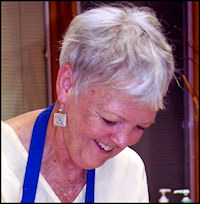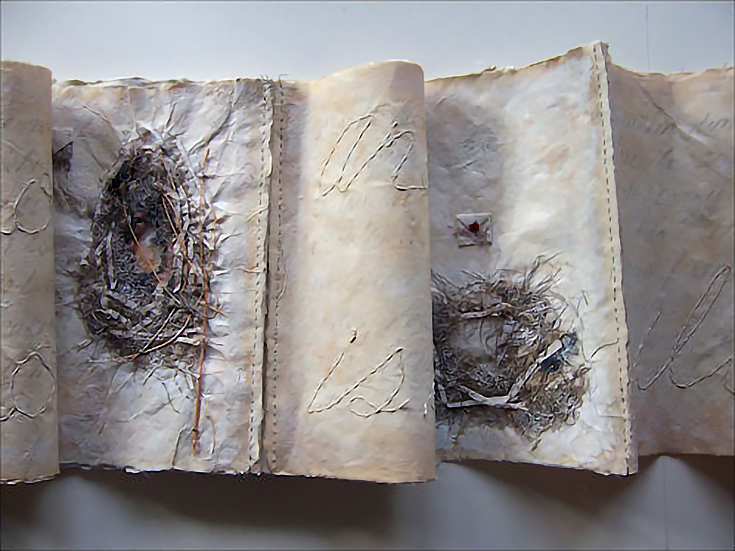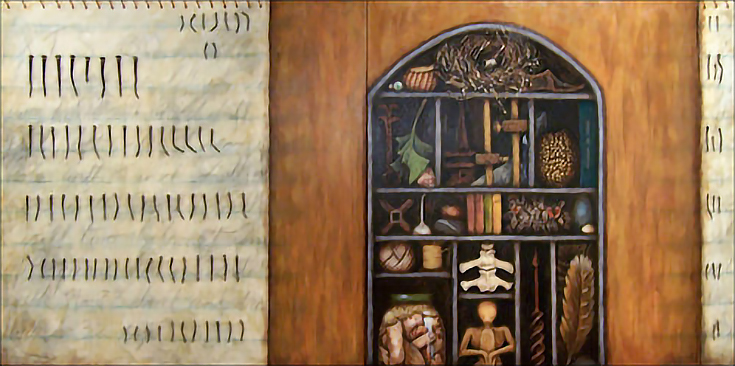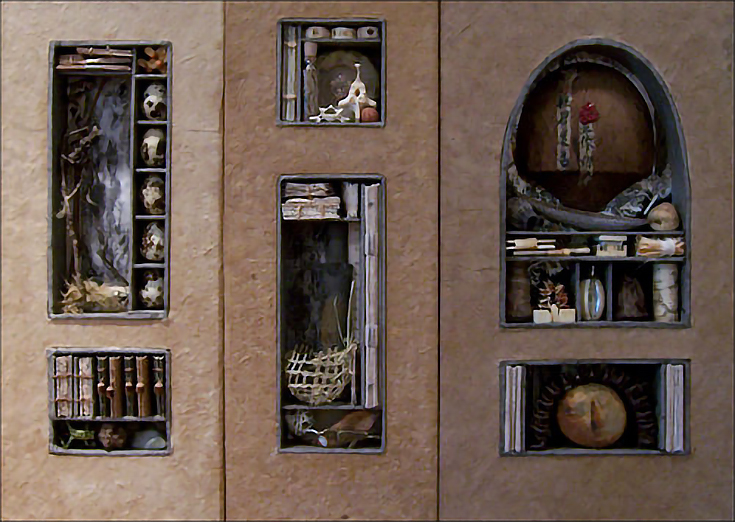 Mixed-media artist Sandy Webster has always created with her hands, but she hasn’t always painted or been an assembler of objects. In fact, she spent many years working with basketry.
Mixed-media artist Sandy Webster has always created with her hands, but she hasn’t always painted or been an assembler of objects. In fact, she spent many years working with basketry.
Then one day Sandy realized that she had so much more to say with her art that making baskets was no longer enough. Today she reminds artists that the most important aspect of creating is staying true to oneself.
Alyice: How did you come to be a creative individual?
Sandy: I was always creating, always drawing, but most of what I created was for fun, to see if I could do it. We did quite a bit of sewing out of necessity when I was young, so there was plenty of cloth to play with. We often used what was available. Recycling and making do was simply a way of life.
Alyice: After years of making baskets, you switched gears and took up painting and creating with found objects. What drew you to mixed media art?
Sandy: For my exploratory nature, basket making was simply too much about the craft: materials and techniques. I wanted a way to express and address my ideas and basket making was very limited in that respect. In the end, published and exhibited works in the basketry field ceased to have any interest for me as they became more and more predictable and repetitive.
Alyice: For those who don’t know, how does making mixed-media artwork differ from basket making?
Sandy: In a way, it really doesn’t differ that much. Mixed media, as it is practiced today, is a very wide category. It can take on any form and any number of mediums can be used in a single piece.
Unfortunately there seems to be the perpetual problem of when to stop creating in mixed media. And when one’s not careful, it can become formulaic as well. Decorative papers, stamped images, clever uses of paints and textures, and the mystifying use of a stranger’s personal photographs tend to be overused to point of becoming a piece of décor for decoration’s sake or a pretension of intrigue.
Alyice: How did you find your artistic voice?
Sandy: I think my artistic voice was always there. It was when I realized that I was not really satisfied with just the making of something that I truly found my artistic voice. It was when I realized that I needed to get an idea across.
I wanted to put my ideas into a visual form. Acquiring skills and materials to manipulate have little meaning unless they are in support of something that matters to me. Undergraduate and graduate school in the arts helped define and clarify my reasons for making the art that mattered to me.
The questions became, “What am I trying to say in this work?” and “Why was I trying to say it?” And finally, “Is it apparent in the resulting artwork?”
Alyice: In your art, you like to include materials that blend the past with the present. Can you share with us how this blending helps to strengthen your pieces?
Sandy: I think when you reach a certain age memory becomes an elusive, yet necessary component in an artist’s work.
Like Marcel Proust, we can be swept back in time by the slightest thing and then live those associated experiences all over again. This is very rich territory for artists and writers as well.
We can capture the essence of something by way of a word, a small memento, or text; something that will reinforce our ideas. In this respect, found objects in artwork take on meaning beyond their intended purpose and are universal signifiers – to the artist and the viewer.
In the end, creating mixed media with intent allows us to lose ourselves in rich recollections and have the opportunity to take someone else along.
Alyice: Is there any one rule that you follow regardless of style or design?
Sandy: I follow a rule to stay busy and keep the work my own, uninfluenced by others. It is important that I know what is in front of me has arrived there through my own personal need to have it exist. Often it is important to explore and it requires research on my part to learn more about a particular medium and its history in the arts, which can result in being influenced by the works of others, but it is imperative I remember that my voice has been spoken and heard. What matters most is using my own voice.
I keep a picture of the late Agnes Martin in my studio to remind me of her focus and determination: “I paint with my back to the world.” She is there to remind me of the importance of tuning everything else out and just getting on with the act of creating.
Alyice: Your work blends colors beautifully and seamlessly, the materials and paints definitely complement one another. Can you share any tips on selecting complimentary colors?
Sandy: I use a very muted and earth-toned palette. Most of that has to do with preference. These colors express my ideas of memory, place, and environment better than any other colors.
Quite often, in my work, there is the use of pigments that I have gathered and processed myself; pigments to fix “place” upon the work. These hand processed colors are a way for me to bring a memory of place and experience directly into the paintings, journals, drawings and mixed media works I create. Whereas bright, intense colors that call attention to themselves are a contradiction to the ideas I work with, the muted, earth-tones are familiar and comfortable.
To learn more about Sandy, and to explore her other mixed-media creations, please visit her website at www.SandyWebster.com.
This post may contain affiliate links.



